1. Theme
Intervention Theme
In my previous interventions, I observed that when AI directly generates faces or human figures, participants often experienced authenticity doubts, uncanny valley reactions, and ethical discomfort.
Therefore, I shifted my focus to jewelry as a design carrier — it is tangible, avoids identity and bodily ethics issues, and naturally embodies emotion, aesthetics, and self-expression.
Theme of this intervention:
An Experimental Intervention Using AI-Personalized Jewelry Design to Examine Affective and Relational Brand Responses
The entire experiment included four main phases:
- Brand Encounter – Introducing participants to the brand’s emotional atmosphere.
- Personal Input – Translating participants’ identities, emotions, and preferences into prompts.
- AI Co-Creation – An AI designer generated personalized works in real-time, allowing participants to become co-creators.
- Emotional Reflection – Gathering emotional feedback through discussion and questionnaires to evaluate affective connection and brand relationship shifts.
Participants: One AI designer, one host, one assistant, and 15 on-site participants.
Participants were voluntarily recruited from CSM Street, including students, visitors, and staff from diverse cultural and professional backgrounds (aged 18–40, from Europe, Asia, and other regions).
All participation was voluntary and anonymous; data were collected solely for academic purposes.
2. Intervention Structure – Four Phases
Phase 1: Brand Encounter & Context Setup
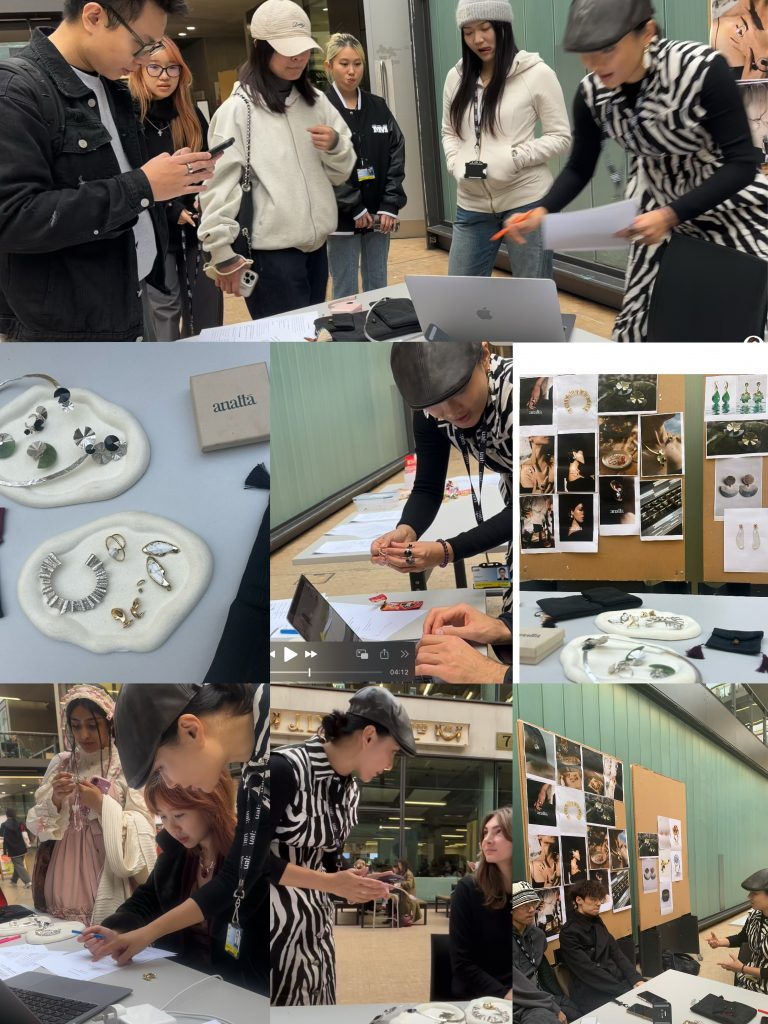
Participants entered the Anatta exhibition space at CSM Street.
They learned about the brand’s story, values, and aesthetic language, viewed jewelry samples and AI co-creation examples, and developed an initial emotional and aesthetic impression.
Objective: To build a preliminary affective bond between participants and the brand.
Phase 2: Personal Input & Prompt Creation
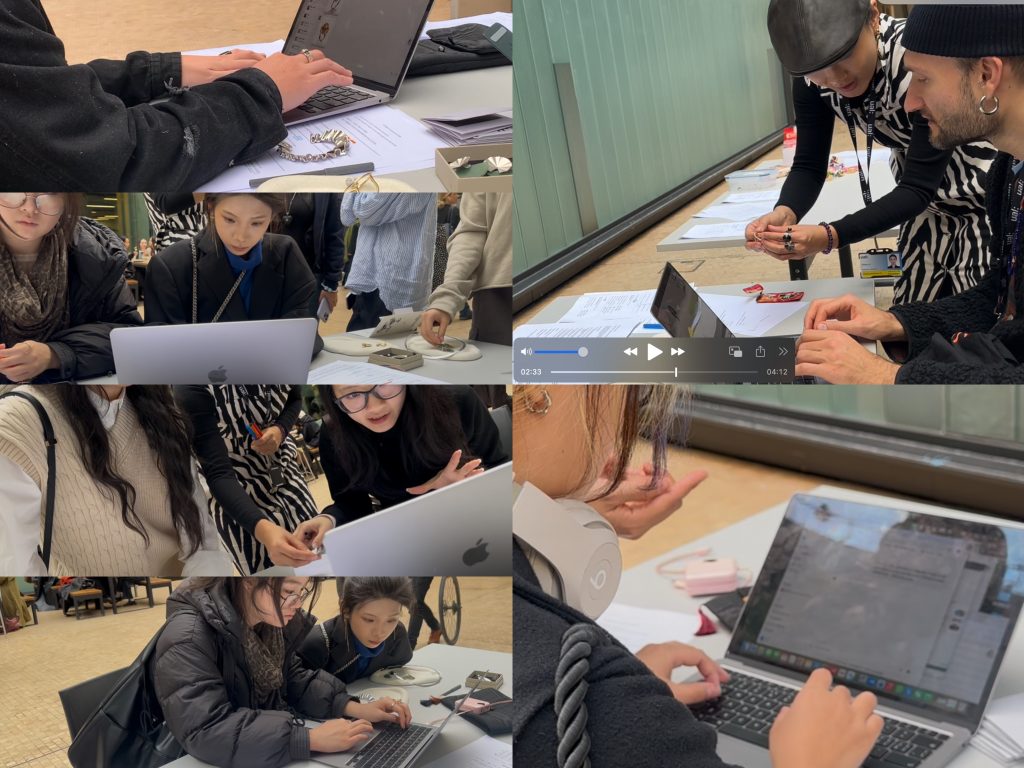
elected jewelry ,input personal information ,followed by deeper conversation with Chatgpt
Participants selected one piece of jewelry and input personal information into ChatGPT — such as age, gender, and nationality — followed by deeper conversation describing their current mood, energy state, preferred color, texture, shape, and emotional expectations (e.g., “what they hope this jewelry can bring them”).
The AI transformed these personal elements into visual prompts for design generation.
Objective: To make self-expression the starting point of co-creation, observing how identity → emotion → design is transformed.
Phase 3: AI Co-Creation & Visual Output
An online AI designer used professional generative models (2D / 3D / motion graph) to create original jewelry visuals based on each participant’s prompt.
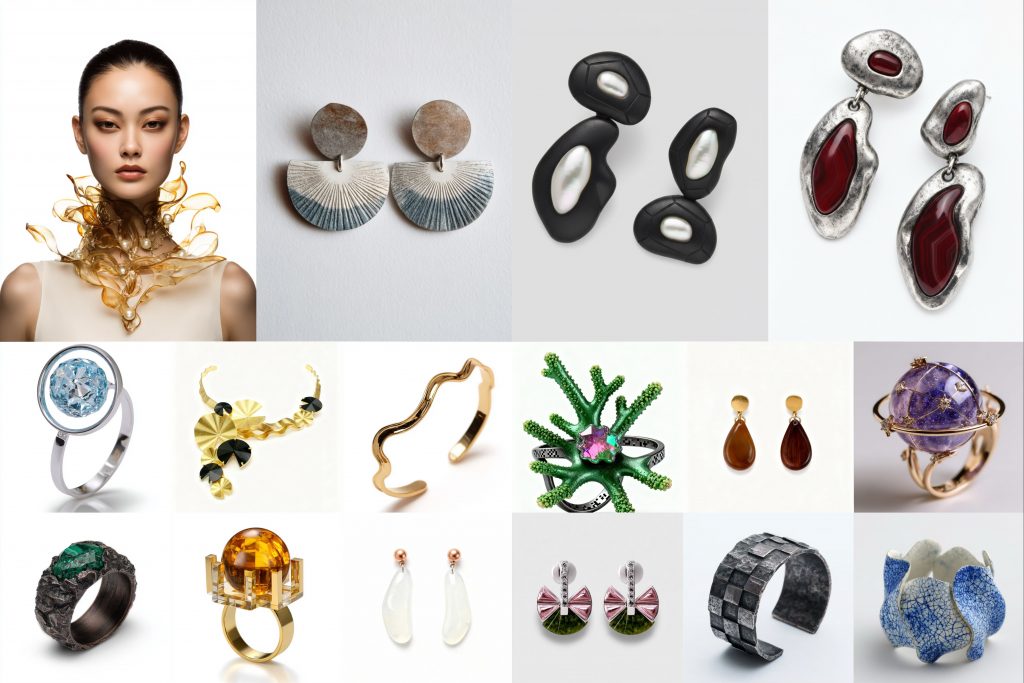
2D
Participants could request further modifications (color, gloss, form, atmosphere, etc.).
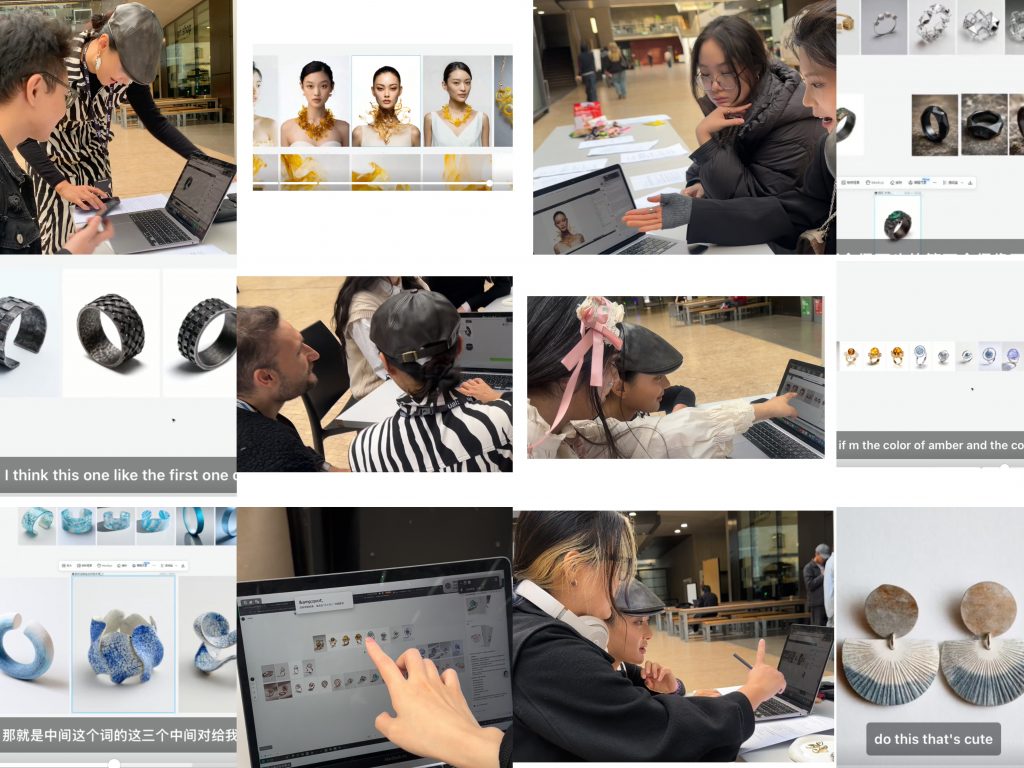
After several iterations and selections, each personalized design was finalized, printed, and added to the AI Co-Creation Wall.
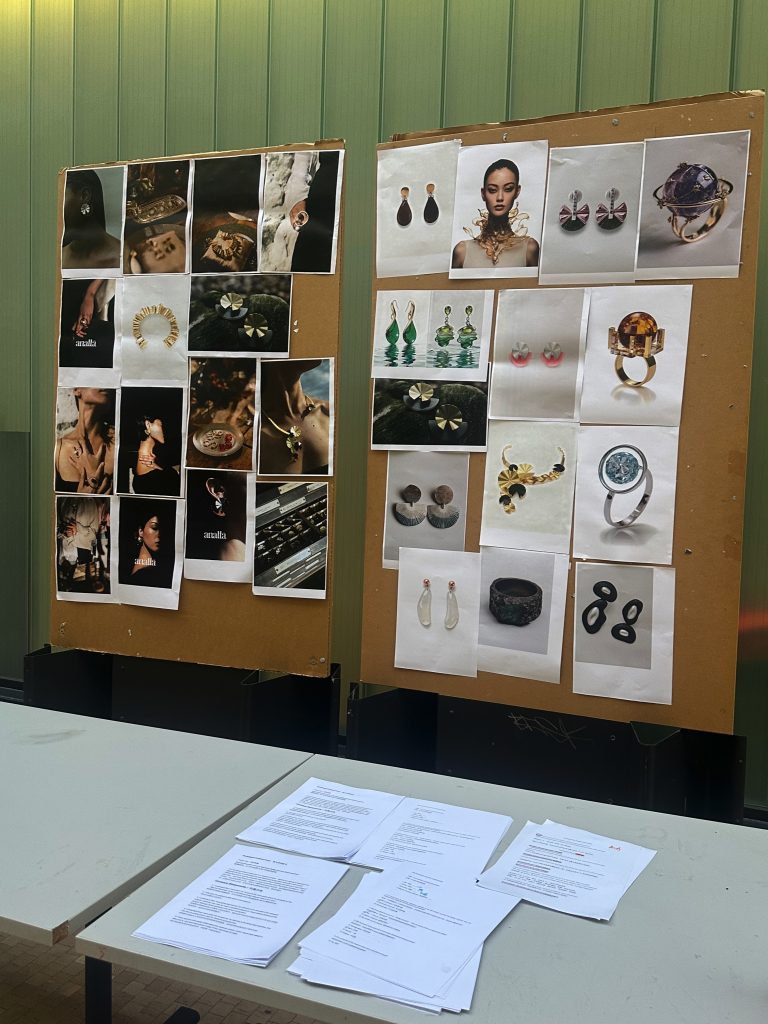
AI Co-Creation Wall
Objective: To test whether AI, through instant feedback and controllable modification, could enhance participants’ sense of being understood, emotional projection, belonging, and brand connection.
Phase 4: Reflection, Sharing & Emotional Feedback
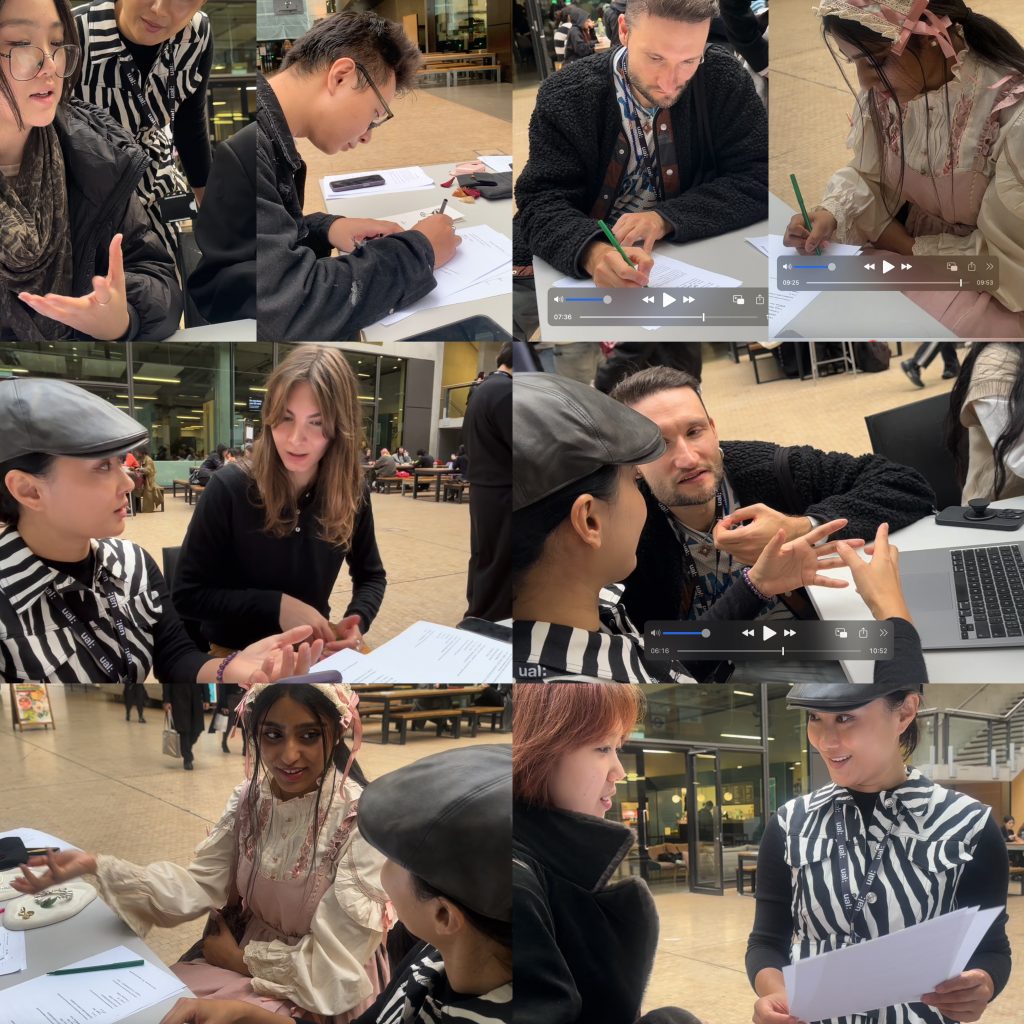
Participants shared their immediate reactions to the final designs — liking, surprise, feeling understood, or discomfort. We discussed AI’s role in the design process, their willingness to participate in similar brand activities, and whether AI co-creation increased their connection with the brand.
They then completed questionnaires assessing emotional resonance, trust, and brand bonding, and their works were featured in a Digital Gallery.
Objective: To collect affective responses and experiential data to evaluate whether AI co-creation strengthens customer–brand emotional connections.

3. Methodology—Triangulation
Compared with the behavioral observation data collected in earlier interventions, this round of research addressed previous limitations by gathering and analyzing intervention samples from multiple time points, including long-term online users and new offline participants. In addition, I conducted follow-up interviews with stakeholders from different backgrounds and applied methodological triangulation to cross-analyze the findings, thereby enhancing the credibility and validity of the research.
Behavioral / Attitudinal Data – What participants did
- Interest in participation (Q1)
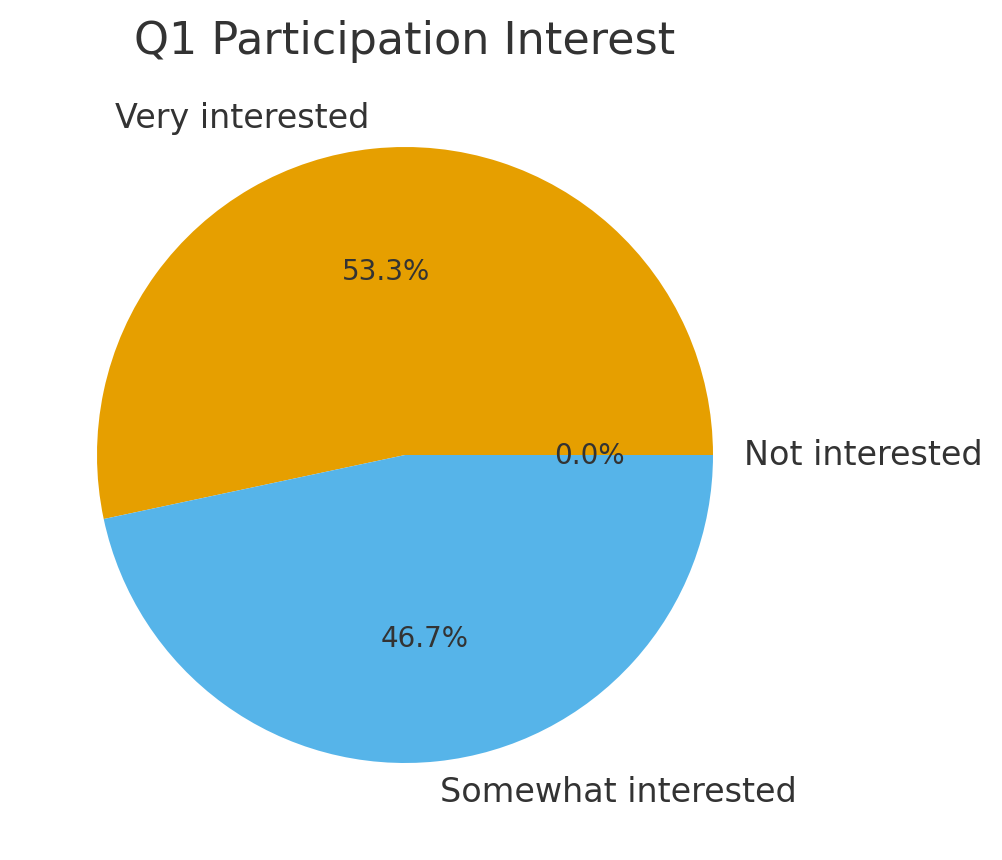
- Very interested: 8
- Somewhat interested: 7
- Not interested: 0
→ 100% showed interest — proving the high appeal of AI × self-expression × instant feedback.
2. Willingness to use AI as an assistant (Q2)
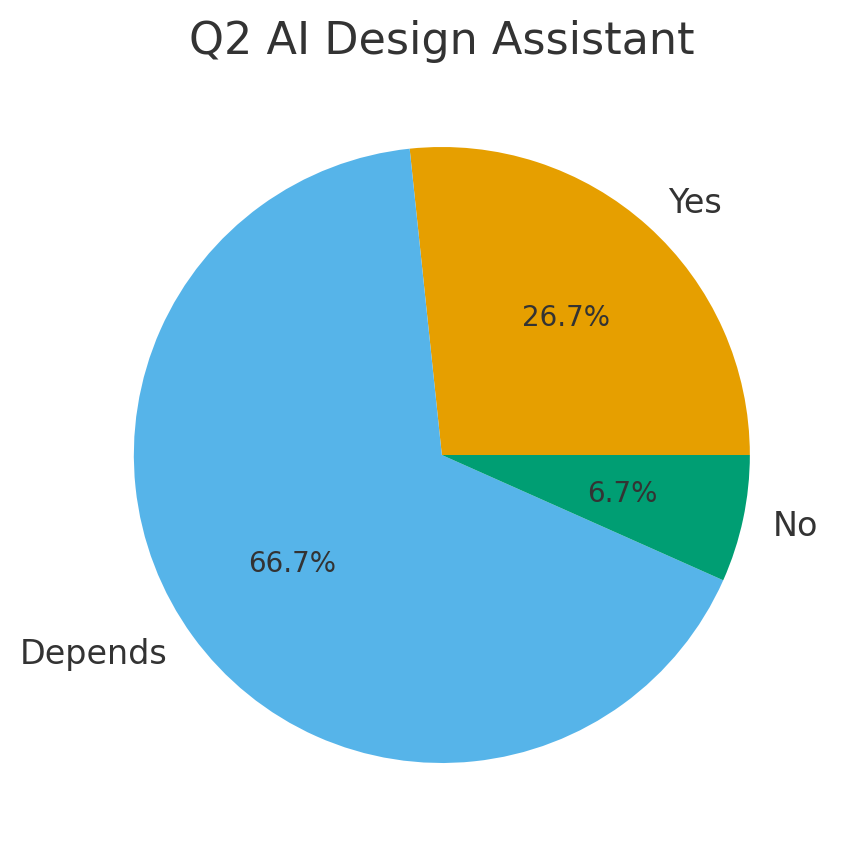
- Strongly yes: 4
- Depends: 10
- No: 1
→ Most participants were open to AI collaboration but preferred retaining decision control.
3. Emotional attachment to brand (Q3)
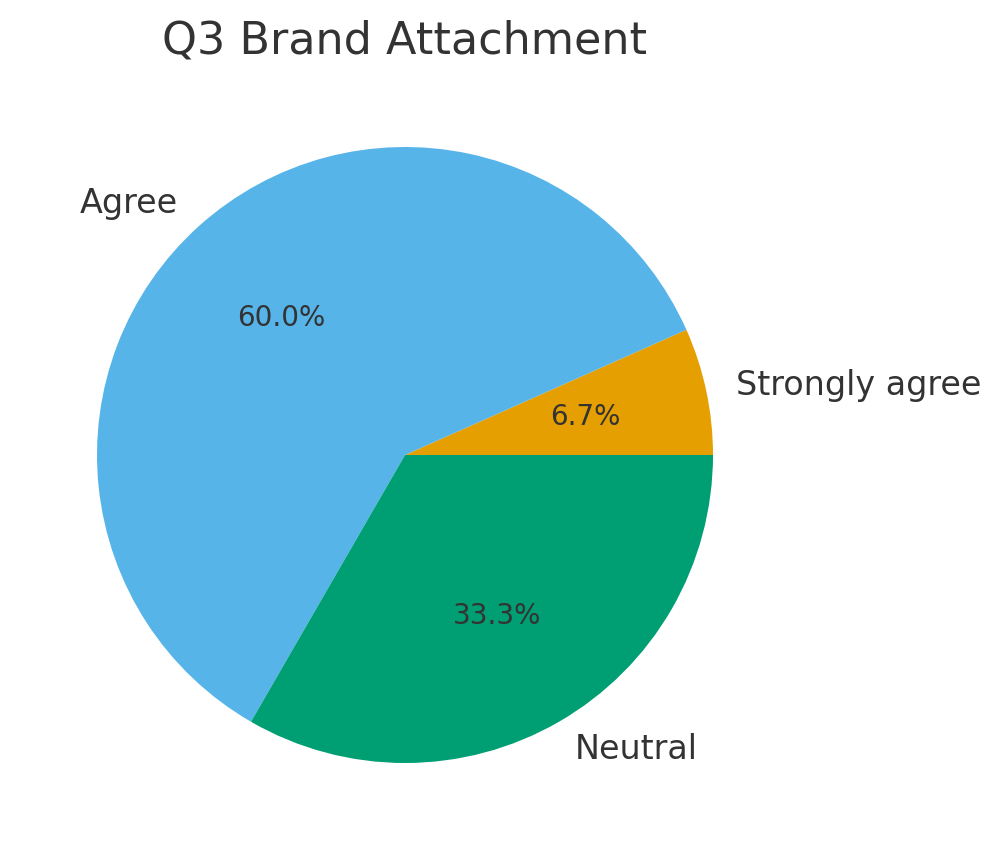
- Strongly agree: 1
- Agree: 9
- Neutral: 5
→ 66.7% reported stronger emotional attachment post-intervention — confirming AI co-creation as an effective branding tool.
4. Feeling more connected to brand (Q4)
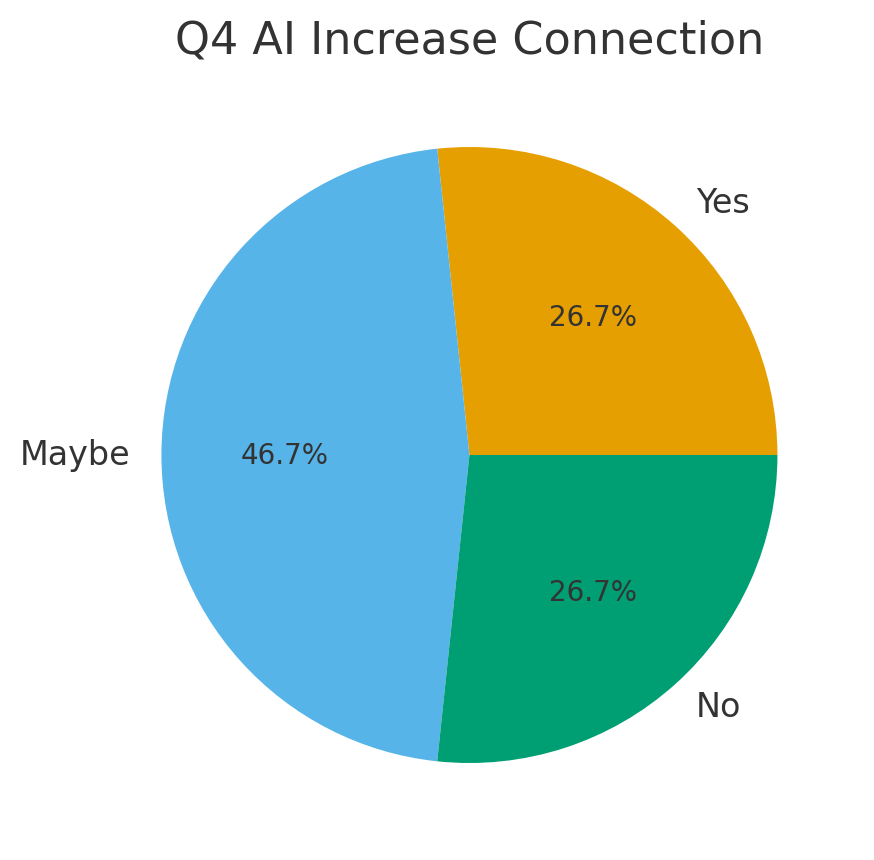
- Yes: 4
- Not sure: 7
- No: 4
→ The effect was conditional — AI creates potential for connection but doesn’t guarantee it.
5. Willingness to follow/support the brand (Q5)
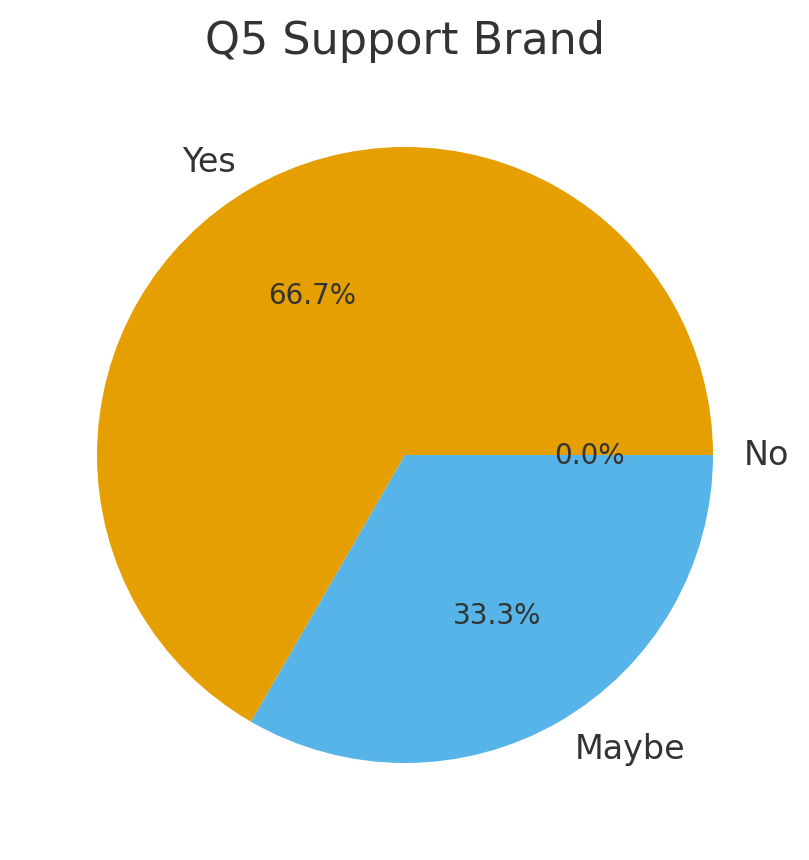
- Yes: 10
- Not sure: 5
- No: 0
→ Co-creation significantly enhanced brand affinity.
6. Purchase intention (Q6)
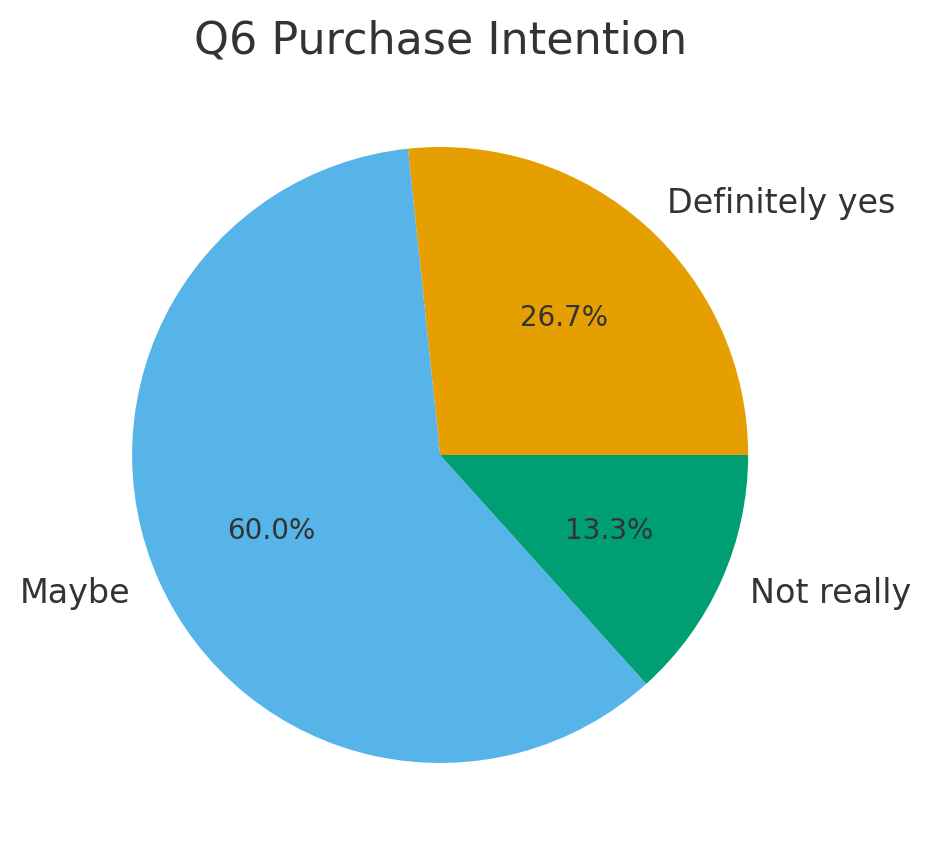
- Definitely would: 4
- Possibly: 9
- Unlikely: 2
→ Most expressed interest in buying if the real product matched the digital output.
7. Willingness to share (Q7)
- Would share: 7
- Unsure: 6
- Would not: 2
→ The co-created visuals had strong social media sharing potential.
8. Enjoyment (Q8)
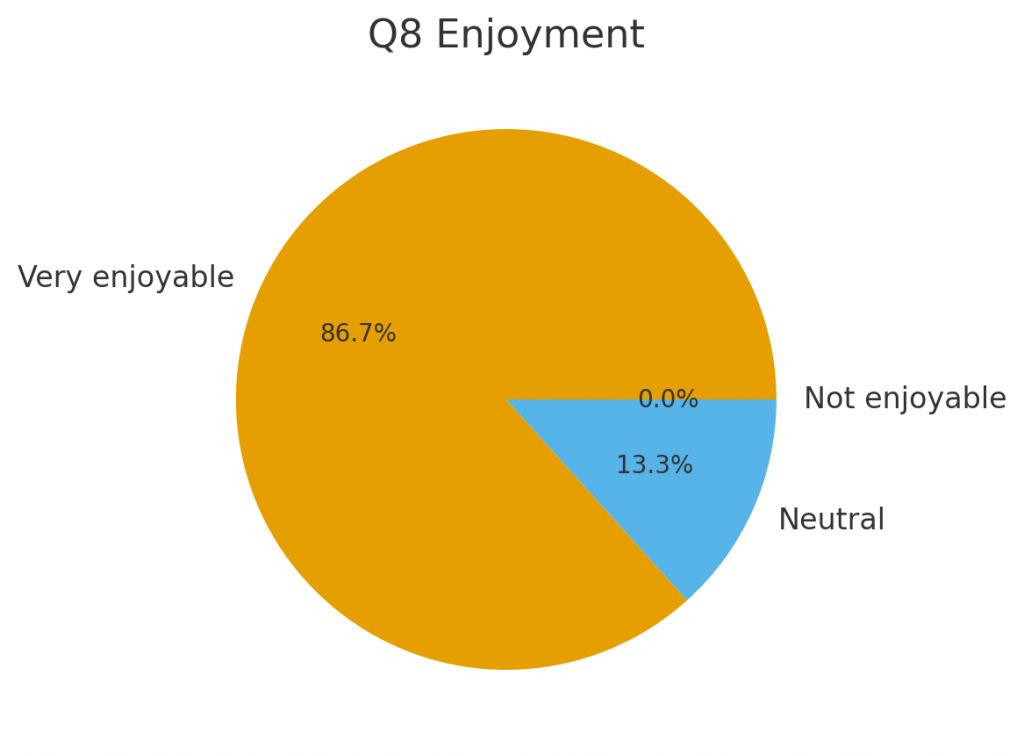
- Very enjoyable: 13
- Neutral: 2
- Not enjoyable: 0
→ Almost no negative experience — proving the format’s suitability for brand engagement.
Self-report – What participants said
Novelty & Efficiency
- “It’s a new experience.”
- “AI’s fast and perfect generation was surprising.”
- “Unexpected — first time I liked an AI creative work.”
- “Like the material, cute.”
→ The immediacy and accessibility of AI were key sources of emotional value.
Personalization & Feeling ‘Seen’
- “Individual experience, customized.”
- “Unique style depends on description.”
- “Having my design that I have described.”
- “Being part of the design process feels meaningful.”
→ Personalization is not just a function — it is an emotional experience.
Attitudes toward AI and Human Roles
- “AI has emotional distance.”
- “Real designer fix.”
- “Prefer human crafts.”
- “Communication with real human assistant is important.”
→ AI was seen as efficient, but warmth and trust still came from human presence.
Brand Bonding
- “Using this as a tool to get customers’ attention is okay.”
- “This activity creates a positive connection.”
- “As a new brand, this is a good way to connect.”
- “Would consider buying if the real product matches.”
→ AI co-creation was perceived as an effective brand engagement method.
Visual-related Feedback – What participants saw and felt
Materiality
Participants associated AI-generated visuals with tangible materials:
- “Ceramic-like texture and shell shape.”
- “Matte, ceramic, shell-like texture.”
→ These material associations made the visuals feel more realizable and affected purchase intention.
Consistency with Personal Input
- “Unique style depends on my description.”
- “Having my design that I have described.”
→ Input-output consistency created a strong feeling of being understood.
Emotional and Credibility Reactions
- “Cute / cool / unexpected.”
- “AI has emotional distance.”
- “Needs real designer fix.”
→ Visuals evoked surprise and delight but lacked emotional warmth and credibility — participants still relied on the human designer’s expertise.
Triangulated Insights
In summary:
AI expresses; humans feel.
AI sparks interest; humans build trust.
AI personalizes; humans give meaning.
The emotional bond arises not from AI alone but from a collective ritual of co-creation — AI × Human × Participant × Brand.
Hence, the precise data-driven conclusion is:
AI enables emotion but does not embody it.
AI acts as the catalyst of affective engagement, not the final container of emotional connection.
This explains participants’ recurring comments like:
- “It’s made for me.”
- “This process feels meaningful.”
- “I’d support the brand — if the real product matches the visual.”
4. Key Findings
① Personal input drives the feeling of being seen — the emotional core of engagement.
② AI enables emotional activation, but human designers provide warmth and trust.
③ Visual surprise enhances emotion, but realizability and credibility depend on human correction.
④ The co-creation ritual, rather than AI alone, fosters deeper brand attachment.
5. Reflection
This intervention reshaped my understanding of AI’s role in branding.
AI is not an emotional subject but an emotional activator — through instant feedback and personalization, it allows participants to quickly experience “being seen.”
However, participants’ evaluation of “realism” (materiality, texture, believability) revealed that AI’s emotional value is transient, while trust must be human-driven.
AI evokes curiosity; humans create meaning.
The true emotional connection arises from the synergy of AI × User × Designer × Context — not from technology alone.
Yet, this experiment also exposed boundaries: instant generation cannot guarantee realizability, and surprise often transforms into dependence on human validation.
Brand connection, therefore, may spark instantly but requires continuity to sustain.
Overall, AI expands the entry point of brand experience, but connection still depends on human interpretation, material design, and interpersonal engagement.
6. Weaknesses
Despite the intervention’s success in generating immediate emotional responses, several limitations remain:
- Sample bias – The participant group (n=15) consisted mainly of art and design students, whose aesthetic sensitivity and curiosity may skew results toward positive experiences.
- Contextual dependence – The intervention relied heavily on situational design, researcher facilitation, and human–AI collaboration, making it difficult to isolate AI’s pure emotional effect.
- Lack of material verification – The outputs were digital only, lacking tangible properties such as weight and craftsmanship, leading participants to rely on human designers for validation.
- Temporal limitation – As a one-time experience, the data mainly captured immediate affective responses rather than long-term emotional bonding.
In summary, this intervention highlights AI’s potential in initiating emotion, but its ability to sustain emotional relationships remains limited.
Further iterations and comparative studies in varied contexts will be required to examine the long-term emotional and relational efficacy of AI co-creation in branding.
Leave a Reply